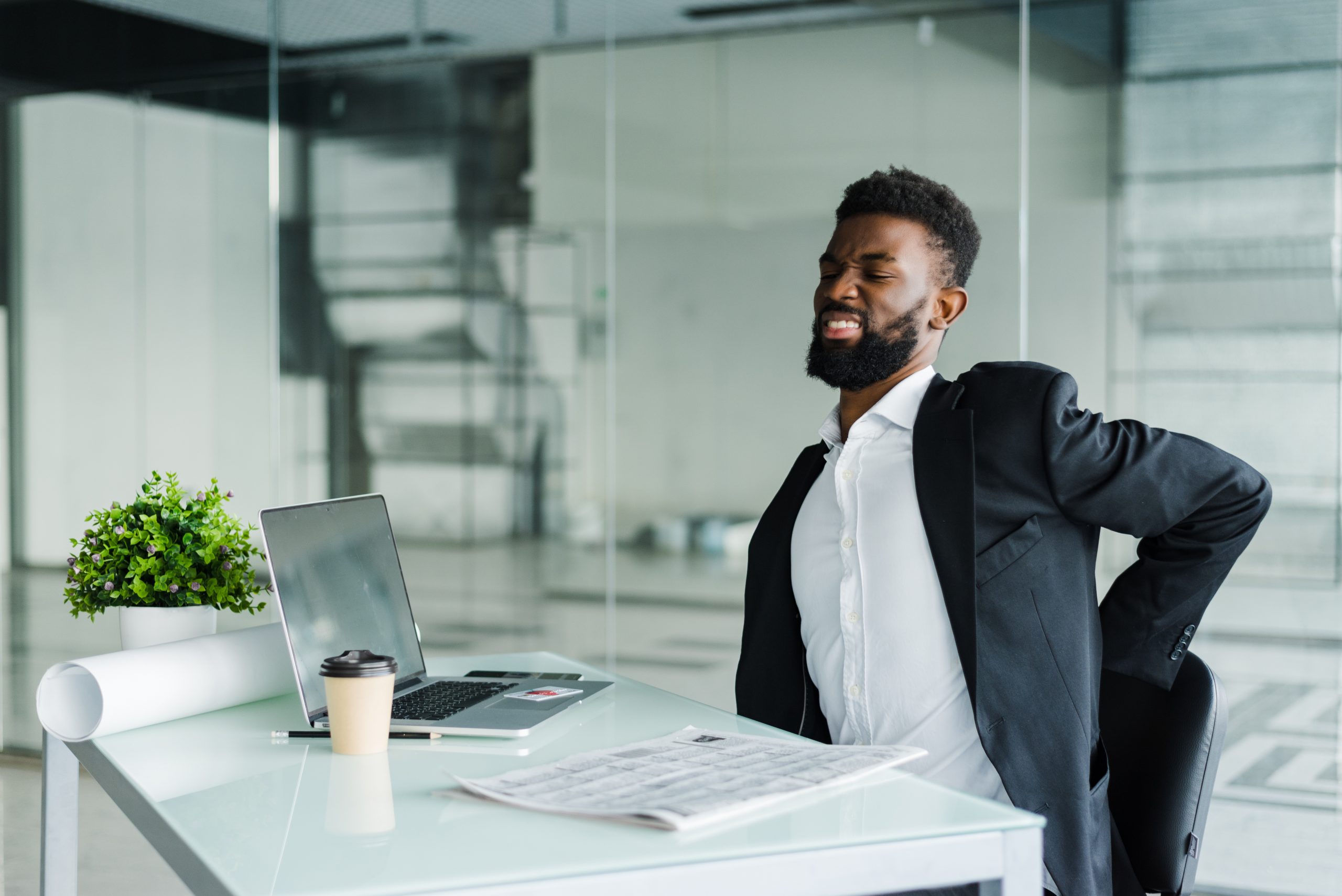
02 Mar Sitting too much at work? Avoid musculoskeletal disorders
Many organizations when conducting well-being or health assessment, are surprised by the fact that one of the main reasons for absence from work are musculoskeletal disorders and pain. Sitting is quickly developing into a modern-day work disease.
Work-related musculoskeletal disorders are impairments of bodily structures – muscles, joints, tendons, ligaments, nerves, and bone. They include back pain, upper limb pain, and lower limb pain.
There are known associations between work factors and joint pain. Forced or awkward postures, repetitions, high levels of force, and non the less sitting for too long are just a few of the factors.
Too much sitting and prolonged periods of sitting are high-risk factors for joint pain. Not to mention sitting in awkward postures. Are your employees sitting properly? What about while working from home?
Prolonged sitting, in the long run, leads to an imbalance of the torso and hip muscles.
Balance is usually affected by shortened hip flexor muscles that connect to the front part of the lower backbone and increase its curve. This causes uneven pressure on intervertebral disks and consequent pain in the lumbar spine.
The musculoskeletal disorders have a significant impact also on employers through absenteeism, lost productivity, and the economic burden that comes with it. This measured by compensation costs, lost wages, and lost productivity, is between $45 and $54 billion annually.
Almost half of the employees reported they have felt or suffered from back pain, shoulder, or neck pain in the last 12 months.
What can organizations do to prevent musculoskeletal disorders?
The first step is to raise awareness that such conditions need attention and have to be followed by appropriate measures through the establishment of well-being programs. It is important to understand what are the main sources of musculoskeletal disorders.
Office workers require a different approach as blue-collar workers, lifting loads.
If I focus on office workers, with an excessive amount of sitting, I recommend encouraging an active lifestyle and giving the opportunity to employees to be active during their work. This means promoting measures such as walking meetings, using the stairs, treadmills under the desk, ergonomic chairs, proper table settings, standing while having a phone call, and taking active breaks.
5 – minutes Active break
An active break is a series of simple stretching exercises done at the office table or at the workplace.
They are short 5 to 10 minutes long exercises and it’s recommended to do them every hour.
You can help your employees to incorporate this short exercise session into their work routine.
We have prepared a short 5-minute-long exercise plan which will help employees to prevent joint pain and musculoskeletal diseases. Feel free to distribute the video across your office.
At 24alife we understand that different workplace demands and settings require more specific exercises to target different issues. If you have any questions or need a specialized program to prevent sitting diseases, issues related to forced posture, or lift loading we are here to help you. We can design a program, delivered through the app to your employees and guide them through the proper exercise protocols.

